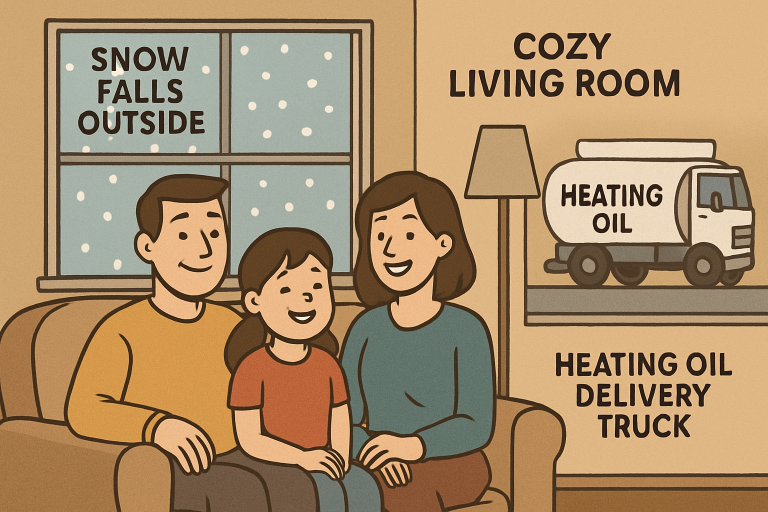Blog
The Unsent Project: Exploring the Power of Unspoken Words

We’ve all experienced moments where words linger on the tip of our tongues, heavy with emotion, yet remain unspoken. Whether it’s a confession of love, an apology, or a farewell, these unvoiced thoughts often leave a profound imprint on our hearts. The Unsent Project, a digital phenomenon and artistic movement, has become a sanctuary for these silenced emotions. By inviting people to share letters they’ve never sent, it unveils the raw, unfiltered power of words left unsaid—and why they matter. In this deep dive, we explore the origins, purpose, and emotional resonance of The Unsent Project, and how it illuminates the universal human experience of longing, regret, and healing.
What Is The Unsent Project?
Founded in 2016 by artist Rora Blue, The Unsent Project began as a creative experiment to explore the emotions tied to unexpressed feelings. Participants submit anonymous letters addressed to someone they’ve never fully confronted—a first love, a estranged family member, a lost friend, or even themselves. Each letter is categorized by the color the writer associates with the recipient, creating a sprawling mosaic of heartache, hope, and vulnerability.
What started as a small art installation has since evolved into a global digital archive, with over a million submissions from people in 200+ countries. The project’s website and social media platforms showcase these letters, transforming private confessions into a shared tapestry of human emotion. From poetic declarations to tearful goodbyes, The Unsent Project reveals how unspoken words shape our lives—and how releasing them can be both liberating and transformative.
The Psychology of Unspoken Words: Why Silence Haunts Us
Why do unsent letters hold such emotional weight? Psychologists point to the Zeigarnik Effect, a phenomenon where incomplete tasks—or unresolved emotions—linger in our minds more persistently than closed chapters. Unspoken words represent unfinished business, creating a loop of “what ifs” and “if onlys” that can fuel anxiety, regret, or even grief.
Dr. Emily Thompson, a clinical psychologist, explains:
“When we suppress emotions, they don’t disappear. They manifest as physical stress, mental fatigue, or relational distance. Writing unsent letters allows individuals to externalize these feelings, disrupting the cycle of rumination.”
The Unsent Project taps into this need for catharsis. By providing a judgment-free space to articulate hidden truths, it helps participants reclaim agency over their narratives.
The Healing Power of Unsent Letters
1. Emotional Release Without Consequence
One of the project’s most compelling aspects is its anonymity. Writers can express anger, guilt, or vulnerability without fear of judgment or retaliation. For survivors of trauma or toxic relationships, this safe outlet is invaluable. A letter titled “To My Father Who Never Stayed” poignantly captures this:
“I spent years waiting for you to choose me. Now, I’m choosing to let go.”
2. Reframing Regret
Many letters reflect regret—missed opportunities, unspoken apologies, or love never confessed. Yet, writing these words helps participants reframe regret as acceptance. As one submission reads:
“I used to hate myself for not telling you how I felt. Now, I realize silence was my survival.”
3. Connecting Through Shared Vulnerability
Reading others’ letters reminds us we’re not alone. A teenager’s plea to a lost friend resonates with a parent grieving a miscarriage; a LGBTQ+ individual’s letter about hiding their identity echoes the struggles of countless others. This collective vulnerability fosters empathy and connection in an increasingly fragmented world.
The Unsent Project and Mental Health: A Tool for Healing
Mental health experts increasingly recognize expressive writing as a therapeutic tool. Studies by Dr. James Pennebaker, a pioneer in this field, show that writing about emotional experiences improves immune function, reduces stress, and enhances emotional clarity. The Unsent Project aligns with these findings, offering a structured yet creative way to process pain.
For example, a 2022 survey of Unsent Project participants found:
- 78% felt “emotional relief” after submitting a letter.
- 64% reported improved clarity about their feelings.
- 52% took steps toward reconciliation or closure afterward.
These numbers underscore the project’s role not just as art, but as a catalyst for personal growth.
How to Participate: Writing Your Own Unsent Letter
Ready to explore your own unspoken words? Here’s how to engage with The Unsent Project:
- Reflect on Your Emotions: Identify the person or situation that weighs on your mind. What do you wish you’d said?
- Write Freely: Don’t self-censor. Let your thoughts flow without worrying about grammar or logic.
- Choose a Color: Pick a hue that symbolizes the recipient (e.g., red for passion, blue for calm, black for grief).
- Submit Anonymously: Visit theunsentproject.com to share your letter.
- Explore Others’ Stories: Read through the archive to find solace in shared experiences.
The Cultural Impact: Why the World Needs Projects Like This
In an era of curated social media personas and superficial connections, The Unsent Project is a radical act of authenticity. It challenges the notion that vulnerability is weakness, instead celebrating it as a source of strength. Its popularity also reflects a growing cultural shift toward prioritizing mental health and emotional honesty.
Moreover, the project’s visual component—color-coded letters displayed like a digital quilt—turns pain into art. Each submission is a brushstroke in a larger portrait of humanity, reminding us that beauty can emerge from brokenness.
Conclusion: The Courage in Letting Go
The Unsent Project is more than an archive of letters; it’s a testament to the resilience of the human spirit. By giving voice to silenced emotions, it empowers individuals to confront their past, heal their present, and reclaim their future. Whether you contribute a letter or simply bear witness, the project invites us all to reflect on the words we carry—and the transformative power of setting them free.
Blog
Kompama : How It’s Shaping Community Engagement and Connection

In a world that often feels disconnected, Kompama emerges as a beacon of hope. This innovative platform is dedicated to transforming the way we engage with our communities. By fostering genuine connections and encouraging collaboration, Kompama empowers individuals to come together for a common purpose. Whether you’re looking to share your ideas or simply find like-minded people, this initiative paves the way for meaningful interactions and relationships. Let’s dive into how Kompama is shaping community engagement and creating lasting bonds among its members.
The Power of Community Engagement
Community engagement acts as a catalyst for positive change. When individuals come together, they create a powerful force that can address local challenges.
By fostering connections, community members share resources and knowledge. This collaboration leads to innovative solutions that benefit everyone involved.
Engaging with others also strengthens relationships. Trust builds among neighbors when they participate in joint activities or projects. This bond enhances the overall well-being of the community.
Moreover, active participation encourages civic responsibility. People feel more invested in their surroundings when they contribute their time and energy to local initiatives.
Empowered communities are better equipped to advocate for themselves. They can voice concerns and influence decisions affecting their lives while ensuring no one is left behind in the process.
How Kompama Connects Communities
Kompama fosters connections by creating a vibrant online platform where community members can share experiences and resources. It serves as a digital hub, bringing people together regardless of geographical distance.
Through personalized profiles, users can showcase their interests and skills. This feature encourages collaboration on projects that matter to them. Whether it’s organizing local events or supporting small businesses, the possibilities are endless.
The integration of interactive forums allows for real-time discussions. Residents can exchange ideas about neighborhood issues or celebrate shared successes. This dialogue strengthens bonds among individuals who might never have crossed paths otherwise.
Additionally, Kompama promotes inclusivity by ensuring that all voices are heard. Diverse groups engage in conversations that foster understanding and respect. By connecting communities authentically, Kompama helps cultivate lasting relationships based on common goals and passions.
Success Stories: Examples of Kompama’s Impact
Kompama has sparked remarkable transformations within various communities. One notable success story is from a small town that struggled with youth engagement. Through tailored programs, Kompama connected local teens to mentors and resources, igniting new passions in technology and the arts.
In another instance, a neighborhood facing isolation found solidarity through Kompama’s platform. Residents began organizing weekly meet-ups, fostering friendships that transcend age barriers. The revitalization of communal spaces became a point of pride for everyone involved.
Moreover, an underfunded school district implemented Kompama’s initiatives to enhance parental involvement. Increased participation led to better student performance and heightened community spirit.
These stories are just glimpses into how Kompama empowers individuals, strengthens bonds, and creates lasting change across diverse environments. Each narrative showcases the potential of collaboration fueled by shared goals and aspirations.
How to Get Involved with Kompama
Getting involved with Kompama is easy and rewarding. Start by visiting their website to explore various opportunities. You’ll find options ranging from volunteering to participating in community events.
Join local groups on social media to stay updated on initiatives and happenings. Engaging with others who share your interests can spark new ideas and connections.
Hosting an event or workshop is another great way to contribute. Share your skills or passions, whether it’s art, technology, or health awareness.
Don’t underestimate the power of simple actions like spreading the word about Kompama in your neighborhood. Every effort counts toward building a stronger community.
Consider donating resources or services if you have them available. Your support can help amplify Kompama’s mission significantly.
Every little action adds up when passionate individuals come together for a common goal, creating a vibrant network focused on connection and growth.
Future Plans and Expansion for Kompama
Kompama has exciting plans on the horizon. The team is focused on expanding its reach to more communities, ensuring that everyone can benefit from stronger connections.
New features are in development to enhance user experience. These tools aim to simplify how people engage and collaborate within their neighborhoods.
Collaboration with local organizations is also a priority. By partnering with schools, nonprofits, and businesses, Kompama hopes to create initiatives that resonate deeply within diverse populations.
Additionally, there’s an intention to launch a mobile app. This would provide users with seamless access while they are on-the-go, further promoting community interaction.
As Kompama grows, it remains dedicated to listening and adapting based on user feedback. Engaging directly with members will guide future improvements and ensure relevance in rapidly changing environments.
Conclusion:
Community engagement is essential in today’s fast-paced world. It fosters connections and strengthens the bonds among individuals. Kompama recognizes this need and has created a platform that acts as a bridge between communities.
Through its innovative approach, Kompama empowers local initiatives, promotes collaboration, and encourages active participation. The stories of success illustrate how it creates lasting impacts on neighborhoods and groups by bringing people together for common causes.
Getting involved with Kompama is easy. Whether you are an individual seeking to make a difference or part of an organization wanting to engage your community, there are numerous opportunities available. Participating can lead to personal growth while supporting meaningful projects.
As Kompama looks towards the future, plans for expansion are already in motion. This vision includes reaching diverse communities across various regions while maintaining the essence of connection that defines its mission.
Kompama stands as a testament to what community engagement can achieve when harnessed effectively. Its commitment to fostering interaction will continue shaping lives, creating networks of support that uplift everyone involved.
Blog
Hochre : A Comprehensive Guide for Beginners

Have you ever felt overwhelmed by the chaos of daily life? Perhaps you’ve searched for a way to find balance and inner peace. If so, Hochre might just be what you’re looking for. This ancient practice has been gaining popularity as more people seek holistic methods to improve their well-being. Whether you’re curious about its origins or eager to learn how it can enhance your life, this comprehensive guide will unravel everything you need to know about Hochre. Dive in and discover how this transformative journey can lead you toward mindfulness and clarity, one step at a time!
Understanding the History and Origins of Hochre
Hochre has deep roots that stretch back centuries. Its origins are often intertwined with various cultural rituals and practices, making it a fascinating subject of study.
Historically, Hochre emerged in ancient civilizations as a form of expression and connection. It was not just about individual practice but also served communal purposes. Communities would gather to experience its transformative power together.
As time progressed, different regions adapted Hochre to reflect their unique traditions. This evolution led to diverse styles and interpretations, enriching the practice further.
Scholars have traced links between Hochre and other spiritual disciplines. These connections highlight its significance beyond mere physical activity—it’s a holistic approach that encompasses mind, body, and spirit.
Today, people from all walks of life explore this practice for personal growth or spiritual fulfillment. The journey through its history continues to inspire newcomers eager to discover what Hochre has to offer.
The Benefits of Practicing Hochre
Practicing Hochre offers a myriad of benefits that can enhance both mental and physical well-being. One notable advantage is its ability to reduce stress levels. Engaging in this practice encourages mindfulness, allowing individuals to focus on the present moment.
Additionally, Hochre fosters creativity. The unique techniques involved stimulate the mind, helping practitioners think outside the box. This creative boost can translate into various aspects of life, from problem-solving at work to exploring artistic pursuits.
Improved flexibility and strength are also key benefits associated with regular Hochre practice. The movements promote better body awareness and coordination over time.
Furthermore, it cultivates a sense of community among practitioners. Joining classes or groups opens doors to new friendships and support networks that enrich personal growth journeys.
Different Styles and Techniques of Hochre
Hochre encompasses a variety of styles and techniques that cater to different preferences and goals. Each approach offers unique benefits, making it adaptable for practitioners.
One popular style is the meditative form, which focuses on mindfulness and inner peace. This technique encourages individuals to connect with their breath while visualizing serene landscapes.
Conversely, you have the expressive style that emphasizes movement and creativity. Practitioners often incorporate music or art to enhance their experience, allowing emotions to flow freely.
Another notable technique is the communal practice. Engaging in Hochre with a group fosters connection and shared energy, creating an uplifting atmosphere for all involved.
Regardless of the chosen method, each style provides tools for self-discovery and personal growth. Exploring these variations can lead practitioners towards finding what resonates most deeply within them.
Steps to Start Your Own Hochre Practice
Starting your own Hochre practice can be an exciting journey. Begin by creating a serene space that resonates with you. This could be a quiet corner of your room or even outdoors in nature.
Next, gather materials that inspire you. Consider journals, art supplies, or calming music to enhance your experience. These tools will help set the mood for your practice.
Set aside dedicated time each week to immerse yourself in Hochre activities. Consistency is key to developing skills and deepening understanding.
Explore different styles within Hochre as you experiment with techniques. Don’t hesitate to try new approaches; this will enrich your practice.
Consider connecting with others who share an interest in Hochre. Joining communities online or locally can provide support and inspiration along the way. Engaging discussions often spark creativity and motivation for newcomers.
How to Incorporate Hochre into Daily Life
Incorporating Hochre into your daily routine can be both simple and fulfilling. Start by setting aside a few minutes each morning for practice. Even five minutes of focused breathing or meditation can make a difference.
Consider integrating mindful moments throughout the day. Whether sipping tea or walking, use these times to reconnect with yourself. Pay attention to your surroundings; notice details you usually overlook.
Create prompts in your environment that remind you to practice Hochre principles. This could be sticky notes with affirmations on your mirror or calming visuals on your desk.
Engage with community resources, like local classes or online forums, which provide support and inspiration. Sharing experiences can enhance motivation and understanding.
Embrace flexibility in how you practice Hochre. Every individual’s journey is unique, so find what resonates with you personally while staying open to experimentation along the way.
Common Misconceptions about Hochre
Many people have misconceptions about Hochre that can deter them from exploring its benefits. One prevalent myth is that it’s only for the spiritually inclined. In reality, Hochre welcomes anyone, regardless of background or beliefs.
Another misunderstanding revolves around the idea that practicing Hochre requires extensive knowledge or training. The truth is, beginners can start with simple techniques and gradually deepen their understanding over time.
Some also assume that Hochre demands a significant time commitment. However, even short daily practices can yield meaningful results without overwhelming your schedule.
There’s a belief that Hochre leads to isolation. On the contrary, many practitioners find community through shared experiences and support networks. Engaging in discussions enriches the practice while fostering connections with others who share similar interests in personal growth and mindfulness.
Success Stories: Real People’s Experiences with Hochre
Many individuals have shared their transformative journeys with Hochre. One participant, Sarah, found solace in its rhythmic movements during a challenging period in her life. She credits it with helping her reconnect to herself and gain clarity.
John, an enthusiastic beginner, was initially skeptical. After joining local Hochre sessions, he discovered a sense of community that lifted his spirits. The connections he formed enriched his social life and brought him unexpected joy.
Emma emphasizes the mental benefits she experienced through regular practice. Hochre became her daily meditation, allowing her to reduce anxiety and increase focus while balancing work demands.
These stories highlight how diverse experiences can be within the world of Hochre. Each individual’s path reveals unique insights into personal growth and well-being through this ancient practice.
Conclusion
Hochre is more than just a practice; it’s a journey toward self-discovery and wellness. As you explore its history, techniques, and benefits, you’ll find that it can transform not only your perspective but also your daily life. Starting your own Hochre practice is accessible to everyone. With simple steps, you can gradually incorporate it into your routine and witness the positive changes unfold. Don’t let misconceptions hold you back from experiencing this enriching path. Many have walked this journey before you and emerged with inspiring stories of personal growth. Whether you’re seeking mindfulness, balance, or simply a new hobby to engage with, Hochre has something valuable for everyone. Embrace the opportunity to deepen your understanding of yourself through this unique practice—it might just be what you’ve been looking for.
Blog
How Reliable Oil Delivery Services Keep Homes Running Smoothly

As temperatures drop and winter approaches, the role of a trustworthy oil delivery service becomes critical for families wanting to maintain a warm, comfortable home. Dependable fuel delivery means more than just convenience—it provides homeowners with peace of mind, knowing they will never be left unexpectedly without heat. This reliability can make all the difference during harsh weather or supply shortages. Discover more about COD fuel and how a reliable provider can make heating your home stress-free.
Access to a consistent oil supply is crucial not only for comfort but also for ensuring your home’s heating system remains in excellent working condition. If a delivery is missed or delayed, it can cause more than just inconvenience—it may lead to heating problems or system breakdowns, sometimes requiring costly repairs.
Beyond comfort, the predictability and transparency that come with dependable oil delivery services can simplify budgeting and daily routines. Whether you’re seeking automatic delivery or prefer to monitor your own needs, choosing a reputable provider should be part of every homeowner’s winter preparation plan.
To take a deeper look at the importance of reliable oil delivery, resourceful options for delivery schedules, and advances in the industry, continue reading for practical advice and expert insights. For further guidance, The New York Times’ review of heating fuels can be a valuable resource for understanding the available options.

Importance of Reliable Oil Delivery
Having a steady supply of heating oil is essential during the coldest months of the year. Interruptions or unexpected run-outs can cause disruption, discomfort, and even safety risks for families—especially during winter storms or extreme temperatures. Reliable oil delivery providers plan, monitor usage patterns, and anticipate peak periods to ensure their customers are always supplied with the fuel they need.
Additionally, dependable delivery supports the longevity and efficiency of your heating system. Frequent or severe shortages can introduce air into the system, potentially leading to malfunctions or damage. A reputable service keeps these risks at bay, ensuring your equipment functions properly and reducing the need for emergency repairs.
Automatic vs. Will-Call Delivery
When arranging for home heating oil, homeowners generally choose between two types of delivery schedules:
- Automatic Delivery: With this service, the provider tracks your fuel usage and weather patterns to schedule deliveries automatically. This eliminates the need for monitoring tank levels, ensuring you won’t run out during critical times. It’s a set-it-and-forget-it solution, ideal for busy families.
- Will-Call Delivery: This method gives you control—you monitor your own oil levels and contact the provider when you need more fuel. While this offers flexibility and may suit those who use their heating system sporadically, it also demands attention and careful planning, especially in colder months.
If you’re undecided about which option works for you, reading up on how automatic delivery compares to will-call services from trusted publications can be a great starting point.
Technological Advancements in Delivery Services
Modern oil delivery services utilize innovative technology to enhance both accuracy and reliability. Smart tank monitors provide real-time updates on fuel levels, eliminating the guesswork and enabling providers to forecast demand and schedule timely deliveries. These technologies help reduce the risk of unexpected shutdowns and enable precise, efficient refueling—even during high-demand periods.
Additionally, route optimization and GPS navigation enable drivers to deliver oil more quickly and efficiently, regardless of changing road or weather conditions. These advancements not only enhance customer satisfaction but also facilitate more effective fuel resource management and contribute to the provider’s overall reliability.
Choosing the Right Oil Delivery Service
Selecting a reputable provider is crucial for ensuring your home remains warm throughout the winter. It’s important to consider:
- Reliability and Reputation: Look for reviews and testimonials highlighting the provider’s consistency and promptness.
- Transparent Pricing: Avoid providers with hidden fees by asking for clear explanations of their rates and policies.
- Customer Support: Access to knowledgeable, responsive staff can be critical if you ever face emergencies or require last-minute adjustments to your delivery schedule.
Consulting consumer resources is a helpful way to evaluate potential businesses before making a decision.
Preparing Your Home for Safe Delivery
To facilitate a safe and seamless delivery process, ensure driveways and walkways are clear of snow and ice. The path to your oil tank must also be accessible for service personnel, especially in winter conditions. Regular tank and heating system maintenance can prevent operational issues and keep your system running efficiently during refueling.
Preparation is about more than convenience—it also ensures the safety of your home, your family, and the professionals delivering your fuel.
Budgeting and Payment Plans
Many oil delivery companies offer a variety of payment and budget programs designed to reduce the financial burden of heating through the colder months. Budget plans often spread the cost of heating oil evenly over the year, making monthly payments predictable. Pre-pay plans enable homeowners to secure a fixed price before the season begins, protecting them from price spikes during peak demand.
Understanding your provider’s payment options can help you manage expenses and alleviate financial stress during winter.
Environmental Considerations
Today’s consumers have options for reducing their home heating footprint. Some oil delivery services offer blends, such as Bioheat, which combine traditional heating oil with renewable resources like biodiesel. These fuels burn cleaner, helping to lower emissions and contribute to a more sustainable home environment. If environmental sustainability is a priority for your family, ask prospective providers about their eco-friendly options.
Conclusion
Reliable oil delivery services form the backbone of a warm, efficient, and safe home in winter. By understanding what to look for in a provider, how to prepare your home, and the benefits of technological improvements and flexible payment plans, you can ensure that your heating needs are covered, no matter the weather. The right oil delivery partner will ensure your home stays comfortable, your expenses are manageable, and your winter is worry-free.
-

 Technology9 months ago
Technology9 months agoRevealed: 8093642079 – Find Out Who’s Behind the Number
-

 Business5 months ago
Business5 months agoHow Horseback Adventures Foster Connection and Wellness
-

 Technology12 months ago
Technology12 months agoRaterpoint: Revolutionizing Online Content Evaluation and Feedback
-

 Technology11 months ago
Technology11 months agoDetecting AI-Generated Text: Tips and Techniques
-

 Technology11 months ago
Technology11 months agoFDXMZ24: A Comprehensive Guide
-

 Entertainment12 months ago
Entertainment12 months agoFappelo: How to Engage with This Exciting New Phenomenon
-

 Technology11 months ago
Technology11 months agoPerchance AI | Intelligent AI Solutions for Your Business
-

 Blog11 months ago
Blog11 months agoBunkralbum: What You Need to Know About This Intriguing Concept
